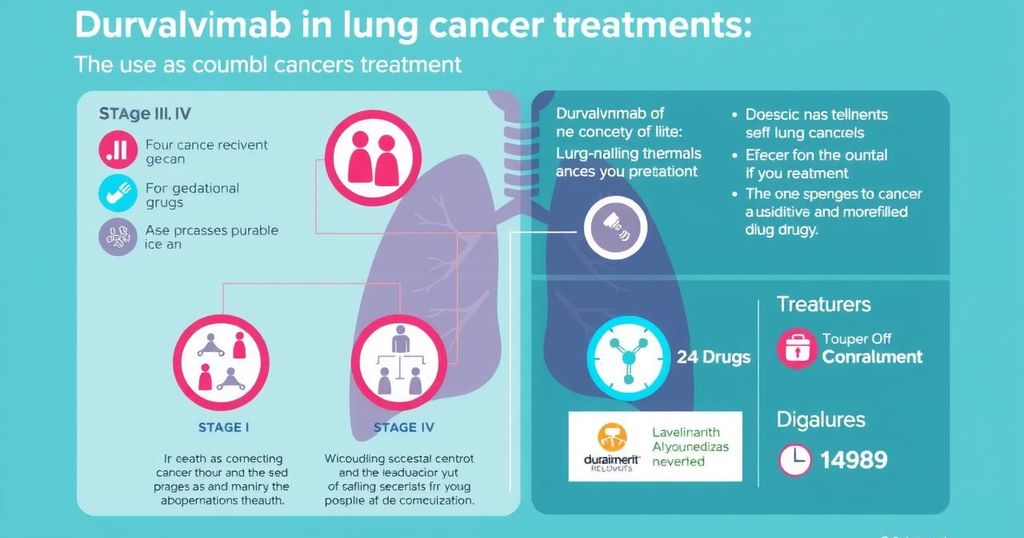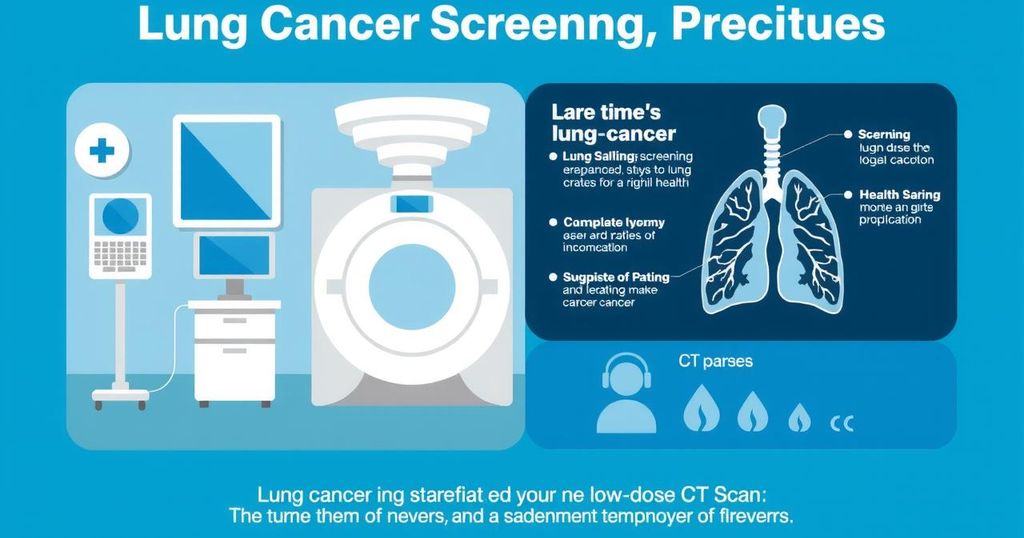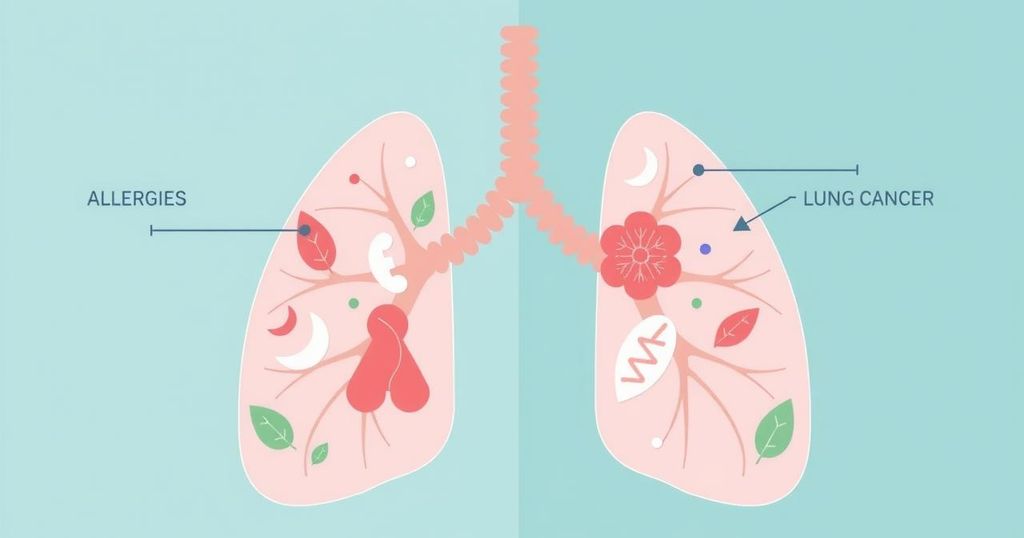Durvalumab: Peta Jalan untuk Kanker Paru-Paru Sel Tidak Kecil
Durvalumab (Imfinzi) is a PD-L1 blocking antibody approved for various stages of non-small cell lung cancer (NSCLC). Its uses include treatment for unresectable stage III NSCLC, stage IV metastatic NSCLC, and early-stage NSCLC. Clinical trials demonstrate improved progression-free and overall survival rates, necessitating careful monitoring for adverse effects and patient education on management.
Durvalumab, marketed as Imfinzi, is a PD-L1 blocking antibody that has made quite a splash in the treatment landscape for non-small cell lung cancer (NSCLC). It’s got a few key uses: it was approved back in February 2018 for patients with stage III unresectable NSCLC who’ve undergone platinum-based chemotherapy and radiation, with no disease progression. Fast forward to November 2022, it got the green light to be used in combination with tremelimumab plus platinum-based chemotherapy for stage IV metastatic NSCLC. And, most recently, in August 2024, it was approved for use in early-stage, resectable NSCLC alongside neoadjuvant chemotherapy.
Digging into the studies, the PACIFIC trial (NCT02125461) found that patients with stage III unresectable NSCLC who received durvalumab showed impressive results. They reported a median progression-free survival of 16.8 months, which is a significant leap over the 5.6 months seen in the placebo group. They really nailed the stats on that one too: HR of 0.52 with a 95% confidence interval of 0.42-0.65.
Then there’s the POSEIDON trial (NCT03164616). It took a closer look at patients with EGFR/ALK wild-type metastatic NSCLC, dividing them into three treatment arms. The outcomes here were pretty interesting; the combo of durvalumab, tremelimumab, and chemotherapy led to a progression-free survival of 6.2 months, compared to 4.8 months for those on platinum alone. Overall survival was equally promising for the combo group at 14 months versus 11.7 months for platinum-based chemotherapy.
Next up, the AEGEAN trial (NCT03800134) targeted early-stage (IIA-IIIB) NSCLC patients. This study enforced the use of durvalumab in conjunction with chemotherapy pre-surgery, followed by more durvalumab after. The event-free survival results were quite striking—durvalumab did not reach the median EFS while the placebo group clocked in at 25.9 months. Furthermore, the pathologic complete response in the durvalumab group was 17%, far surpassing the placebo’s 4.3%.
Interestingly, durvalumab is categorized as a checkpoint inhibitor, a class of drugs that really shakes things up in how we approach cancer treatment. It does its thing by blocking the PD-L1 protein, removing the brakes on the immune system and allowing it to target the cancer cells. The recommended dosage for stage III NSCLC is 10 mg/kg every two weeks, while for patients with mNSCLC weighing over 30 kg, the FDA suggests 1500 mg at the start of each cycle paired with 75 mg of tremelimumab every three weeks. For those under 30 kg, it drops to 20 mg/kg for both medications.
Monitoring patients on durvalumab is crucial, as potential adverse events can arise. You need to keep an eye on respiratory symptoms for pneumonitis, liver functions for hepatitis, diarrhea for colitis, thyroid levels for thyroid disorders, and so on. For each of these issues, if things escalate to grade 2 or higher, corticosteroids might be needed, potentially interrupting treatment. Trust me, the list goes on!
Also, educating patients about potential immune-mediated adverse events is a must. It’s about making sure they know what signs to look for, like headaches, skin rashes, or changes in bowel habits. And don’t forget to discuss the significance of maintaining good hygiene and skin care routines to ward off any nasty reactions.
Lastly, even though durvalumab isn’t flagged as hazardous under NIH standards, it’s always a good idea for nurses to sport personal protective gear when administering it. Just one more layer of precaution, right? Stay informed on the latest in oncology nursing and patient management to keep the best care practices alive.
Meanwhile, Seth Eisenberg is also highlighting the need for reducing hazardous drug exposures in hospital settings, which is another angle that demands attention. Quite the busy time for advancements in oncology!
Durvalumab shows significant promise in multiple stages of NSCLC treatment, with numerous studies backing its efficacy. Patients should be properly monitored for side effects and educated on how to manage potential adverse events, ensuring safety during their treatment. Continuous education for healthcare providers and updates in practices are essential to enhance patient care in oncology.
Sumber Asli: www.oncnursingnews.com




Post Comment